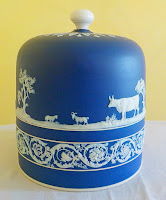 |
| Duddon Iron Furnace |
Having enjoyed our trip to the south lakes last month, we decided to return to Moss Side Farm in order to explore the area a little more. A few miles from the farm stands this magnificent 18th century charcoal blast furnace from the days when iron ore was mined in the area. The motive power was a huge water wheel, sadly no longer in existence, the mill stream now almost dry and hosting a variety of wild plants including Lesser Burdock which I hadn't come across before. The carder bees were absolutely loving it. It's edible for us too, in its first year. The roots can be boiled, but you have to change the water after the first boil. Young stems can be eaten too, raw or cooked. Foraging is a useful hobby with the cost of living as it is at the moment. See Steve's Wild Kitchen for ideas and recipes.
 |
| Duddon Estuary |
Last time out we went kayaking on the river Duddon. This time we decided to visit the Duddon estuary on foot, starting at Foxfield and working our way down to Askam-in-Furness (both of which are accessible by rail). A Little Egret flew overhead as the train crossed the bridge. I was used to seeing these birds in Crete, but as the climate warms, they have now migrated northwards and are resident in the UK. The banks of the estuary make perfect nest sites for Sand Martins, so let's stand and watch them for a bit as they bring food back to the nests. This must be their second brood as they generally have their first brood in May. I would think that this is quite far north for them to have two broods a year. Possibly the warming climate again.
 |
| Elter Water |
After all that trekking about, a rest on the banks of Elter Water seems in order. This is one of the smaller bodies of water in the Lake District, lying between Coniston and Grasmere, and as navigation is prohibited, we can't get the kayak out onto it. However, it's a lovely day for just lazing about, admiring the scenery and watching the insects going about their business. More Carder Bees, this time pollinating the Knapweed; some Carpet Moths resting up in the long grass; and Blue Damselflies busy making more Blue Damselflies. Summer has arrived in Cumbria at last. Elter Water, incidentally, means Swan Lake, and Whooper swans regularly overwinter here.
 |
| Moss Side Farm |
Meanwhile, back at the ranch (to use a phrase that originated as a stock subtitle in the days of the silent movies), we have an evening visitor in the form of a Goldcrest. Along with the Firecrest, this is Britain's smallest bird. Their thin beaks allow them to pluck insects from between pine needles and cones as this one is doing here. Down in the meadow below, the Barn Swallows are taking insects from the air. Something small, lithe and black has just scooted across the field and up over the dry stone wall. I think it was a Mink, but whether a native European or an American Mink, I wouldn't like to say. The American Mink was brought over in 1929 for the fur industry, but due to the misguided release of thousands of them by animal rights activists they have now run riot, much to the detriment of their European cousins and also water voles.
 |
| Hawkshead |
Time to wend our way home again, but how about a stop for Sunday lunch in the pretty little village of Hawkshead? But first, Mattie needs a walk, and there's a pleasant circular route that will take us up into the fields and woods. It also passes through the churchyard of St Michael & All Angels, where William Wordsworth used to like to sit when he went to scool here. Unusually for a churchyard, there are information boards placed about with information regarding the windflowers to be found here. The delightfully named Fox and Cubs are showing well at present. Alternative names are Devil's Paintbrush (a tad inappropriate) and Grim-the-collier. The plant has a pelt of black hairs, reminiscent of the swarthy stubble of Grim the Collier of Croyden, a folklore villain and the title character of a 17th century play.
Thus ends another trip to the southern shores of Cumbria, but I doubt that it will be our last. Enjoy the summer weather, it's almost like being back in Crete again!
Steve's History of Things
In Association With
|
|
|
||
|
|
|
||
|
|
|
|
All the best,
Steve
 Click on the book to see inside |
Beetles and Butterflies; spiders and scorpions; woodlice and worms. How do you tell them all apart? To say nothing of crane flies, dragonflies, bee flies and yet more butterflies. Are they all flies? If not, why call them so? If you're fascinated but confused by the beautiful world of the very small, then this is the book for you.
82 pages of information on all aspects of the world of minibeasts, with over 100 photographs and illustrations, this book will help you track down and identify any arthropod, in its adult or juvenile state, anywhere in the world.
UK Price only £14.99
See all of my books at author.to/SteveDaniels |
Follow me on Steve's Nature Plus
and also on
Steve's Nature
Steve Daniels Naturalists
Steve Daniels Cumbria


.JPG)


.jpg)






You spotted lots of interesting things, but were particularly fortunate that the train commemorating the RAF was on the bridge!
ReplyDeleteThanks Susan. I saw it coming around the headland and waited for it. :)
Delete